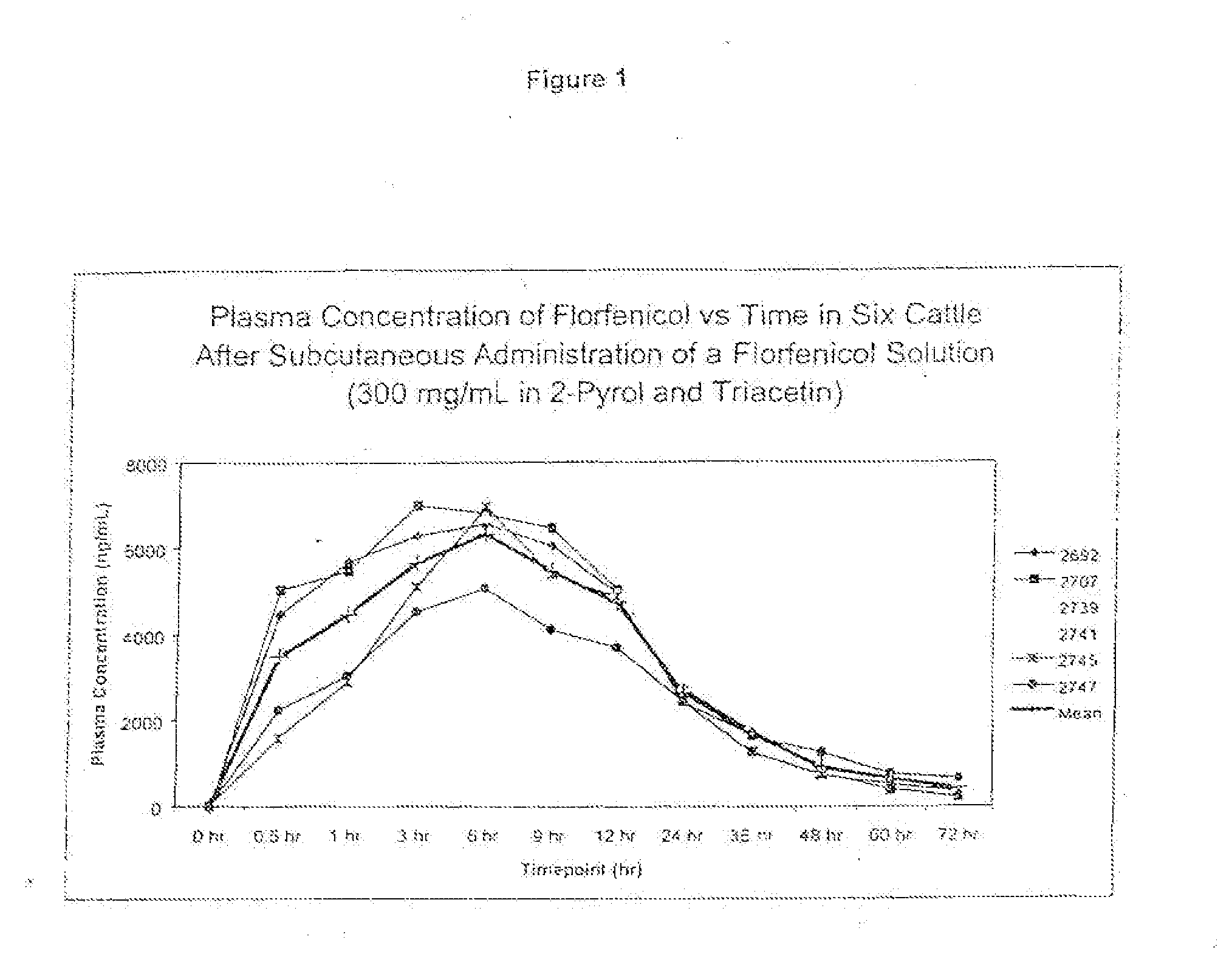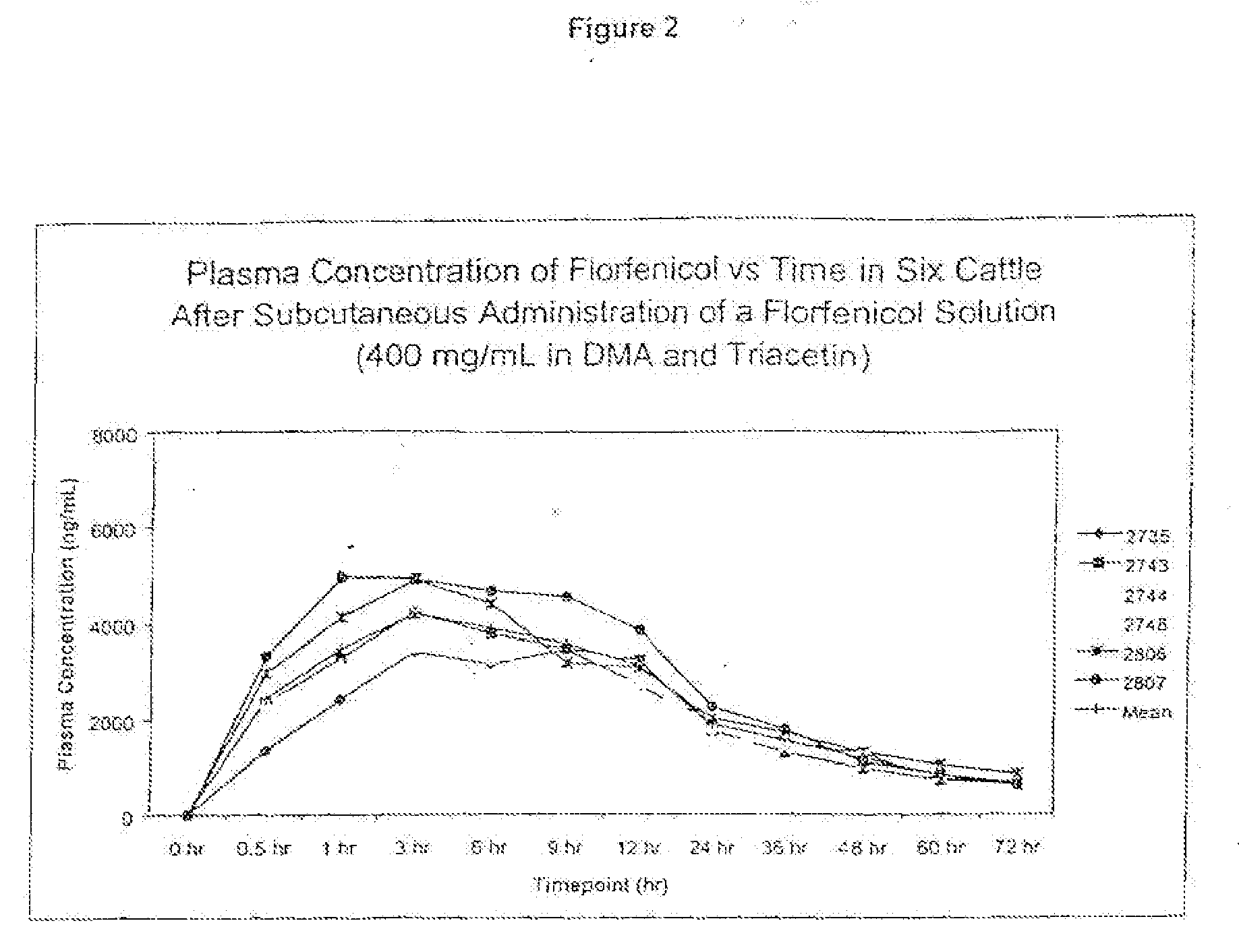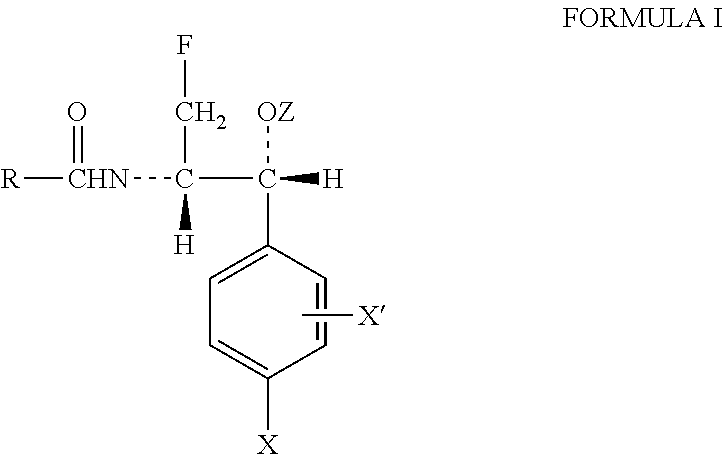Compositions and method for treating infection in cattle and swine
a technology for bacterial infections and compositions, applied in the field of compositions and methods for treating bacterial infections in cattle and swine, can solve the problems of increasing the risk of illness, reducing the immune defenses of calves and other animals, and high incidence of respiratory diseases in cattle or other animals, and achieves convenient administration and stable effects
- Summary
- Abstract
- Description
- Claims
- Application Information
AI Technical Summary
Benefits of technology
Problems solved by technology
Method used
Image
Examples
example 1
[0073]
Percent by weight ofIngredientConcentrationformulationFlorfenicol300 mg / ml30%w / v2-Pyrollidone300 mg / ml30%w / vTriacetinQS v / vQS to 1mL
[0074]The ingredients may be mixed in a single or multiple steps. The florfenicol was mixed with 2-pyrrolidone and then triacetin was added to the mixture.
example 2
[0075]
Percent by weight ofIngredientConcentrationformulationFlorfenicol400 mg / ml40%w / vDimethylacetamide300 mg / ml30%w / vTriacetinQS v / vQS to 1mL
[0076]The ingredients may be mixed in a single or multiple steps. The florfenicol was mixed with dimethylacetamide and then triacetin was added to the mixture.
example 3
[0077]Twenty-four head of cattle were used in the study as described below and were administered the formulations of the present invention. Serial blood samples were drawn at time 0 prior to dosing, then at 0.5, 1, 3, 6, 9, 12, 24, 36, 48, 60 and 72 hours post injection. The animals received one of the following treatment regimens.
TABLE 1FormulationDescriptionDose1number300 mg / mL in 2-40 mg / kg SQ once in the6pyrol and triacetinside of the neck400 mg / mL in40 mg / kg SQ once in the6DMA and triacetinside of the neck1no more than 10 ml per injection site
[0078]The injection site was assessed daily for the length, width and depth of the lesion and findings were recorded on the Lesion Evaluation Form.
[0079]The study was carried out in bovines of approximately 6 months of age or more that weigh about 125 kg or more. Selection was based on health status appearance, tractability and body weight. Animals exhibiting abnormal clinical signs prior to the start of the study were not included in the ...
PUM
| Property | Measurement | Unit |
|---|---|---|
| concentration | aaaaa | aaaaa |
| time | aaaaa | aaaaa |
| concentration | aaaaa | aaaaa |
Abstract
Description
Claims
Application Information
 Login to View More
Login to View More - R&D
- Intellectual Property
- Life Sciences
- Materials
- Tech Scout
- Unparalleled Data Quality
- Higher Quality Content
- 60% Fewer Hallucinations
Browse by: Latest US Patents, China's latest patents, Technical Efficacy Thesaurus, Application Domain, Technology Topic, Popular Technical Reports.
© 2025 PatSnap. All rights reserved.Legal|Privacy policy|Modern Slavery Act Transparency Statement|Sitemap|About US| Contact US: help@patsnap.com



